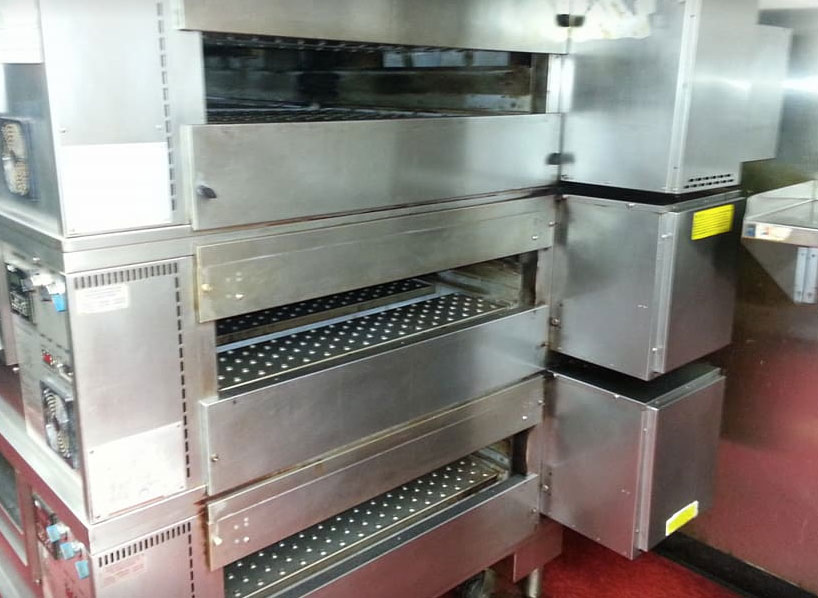From Waste to Efficiency: Harnessing the Power of Hood Cleaning for Energy Cost Savings in San Jose Kitchens
1. Introduction
As the culinary capital of California, San Jose’s kitchens are bustling with activity. From restaurants and hotels to commercial kitchens, the city’s food industry generates a significant amount of grease and airborne contaminants. Over time, these particles accumulate in kitchen hoods and ventilation systems, leading to energy inefficiency, increased utility costs, and even fire hazards. This article explores the transformative impact of hood cleaning on energy cost savings in San Jose kitchens, highlighting the significance of maintaining clean and efficient kitchen exhaust systems.

2. The Importance of Hood Cleaning
Kitchen hoods play a crucial role in maintaining a healthy and functional kitchen environment. They are responsible for removing heat, smoke, and odors from the cooking area, preventing the buildup of grease on surfaces, and ensuring adequate ventilation. Regular cleaning of kitchen hoods is essential to ensure their efficient operation and promote a safer cooking environment.
3. Understanding Energy Cost Savings
3.1. Energy Efficiency in Kitchens
Efficiency is paramount when it comes to running a commercial kitchen. With the constant use of cooking appliances, refrigeration units, and lighting, energy costs can quickly add up. An energy-efficient kitchen not only reduces utility expenses but also minimizes its environmental impact.
3.2. The Role of Hood Cleaning
Hood cleaning plays a significant role in enhancing energy efficiency in kitchens. When kitchen hoods and ventilation systems are clogged with grease and debris, they have to work harder to expel air and maintain adequate airflow. By keeping the hood and exhaust system clean, kitchen owners can optimize their energy usage and save on electricity bills.
4. The Process of Hood Cleaning
4.1. Inspection and Assessment
Professional hood cleaning services begin with a thorough inspection of the kitchen exhaust system. Trained technicians assess the level of contamination and identify any potential issues that require attention.
4.2. Grease Removal and Filter Cleaning
In this step, the cleaning experts remove the grease and grime buildup from the hood and exhaust filters. By doing so, they ensure that the ventilation system functions optimally.
4.3. Duct and Fan Cleaning
The cleaning process extends to the ductwork and exhaust fan. Removing grease and debris from these components ensures that the kitchen’s ventilation operates efficiently, reducing energy wastage.

5. Benefits of Hood Cleaning
5.1. Energy Cost Savings
One of the primary benefits of regular hood cleaning is significant energy cost savings. An unclean hood forces the exhaust system to work harder, consuming more energy and increasing utility expenses. Clean kitchen hoods ensure optimal airflow, reducing energy consumption and utility bills.
5.2. Fire Prevention
Grease buildup in kitchen hoods can become a potential fire hazard. Regular cleaning eliminates this risk, ensuring a safer kitchen environment for staff and customers alike.
5.3. Improved Air Quality
A clean kitchen exhaust system improves indoor air quality by removing smoke, odors, and airborne contaminants. This creates a healthier environment for kitchen staff and visitors.
6. Choosing a Professional Hood Cleaning Service
Selecting a reputable and experienced hood cleaning service is crucial to ensure the best results. Look for certified technicians, positive customer reviews, and competitive pricing when making your decision.
7. DIY vs. Professional Hood Cleaning
While some kitchen owners might consider a DIY approach to hood cleaning, professional services offer unmatched expertise and efficiency. DIY cleaning may not thoroughly remove grease and debris, leading to potential safety and efficiency issues.
8. Maintenance Tips for Kitchen Owners
To maintain a clean and efficient kitchen exhaust system, kitchen owners can follow these tips:
- Regular Inspection: Schedule routine inspections to identify any signs of contamination or damage.
- Wipe Down Surfaces: Regularly wipe down kitchen surfaces to prevent grease buildup.
- Dispose of Waste Properly: Dispose of cooking waste appropriately to avoid clogging the system.
- Educate Staff: Train kitchen staff on the importance of maintaining a clean kitchen environment.

9. Conclusion
Efficient kitchen operations go hand in hand with cost savings and safety. San Jose’s bustling food industry can significantly benefit from harnessing the power of hood cleaning to enhance energy efficiency and reduce utility costs. By investing in professional hood cleaning services and adopting preventive maintenance measures, kitchen owners can optimize their operations and create a safer and greener culinary environment.
FAQs
- Is hood cleaning necessary for residential kitchens?
Hood cleaning is essential for both commercial and residential kitchens. It ensures a cleaner and safer cooking environment while also reducing energy costs. - How often should I have my kitchen hood cleaned professionally?
The frequency of professional hood cleaning depends on the kitchen’s usage and cooking volume. In most cases, commercial kitchens require cleaning every three to six months. - Can I clean the kitchen hood filters myself?
While you can clean the filters yourself, it’s recommended to have them professionally cleaned regularly to ensure optimal performance. - Does hood cleaning improve kitchen ventilation?
Yes, hood cleaning improves kitchen ventilation by removing grease and debris, allowing the system to function efficiently. - Are there eco-friendly hood cleaning options available?
Yes, some hood cleaning services use eco-friendly and biodegradable cleaning solutions to minimize environmental impact. Make sure to inquire about eco-friendly options when choosing a service.







